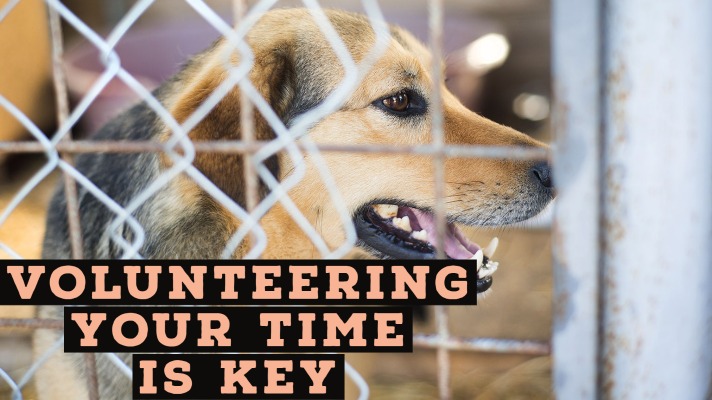15 Ways to Support Your Local Animal Shelter

If you’re one of the lucky owners of a pet in America, chances are, you’ve thought about being able to support your local animal shelter at least once. It’s hard not to want to help out, as there are millions of stray cats, dogs, and other animals that desperately need help and homes. In the United States alone, there are more than 3,500 animal shelters to help provide services to animals. That’s a lot of shelters! Luckily, if you’re able to give at least a couple of hours of your weekend away, it’s more than enough time to be able to support your local animal shelter.
What Types of Shelters are there?
Many different types of shelters exist, and some might offer different services than others for animals. The most common type of animal shelter you’ll come across is the municipal animal shelter from your local city, county, or small town. These shelters are owned and funded by the government, and are associated with the local animal control system. Animal Control is in charge of protecting residents in the community from animals, such as dangerous dogs, and animals suspected of having rabies. Animal control also enforces laws and regulations regarding animals, and luckily, are able to devote resources to offer education programs and investigate animal cruelty.
Other shelters are private non-profit shelters that usually have a board to make decisions, such as the ASPCA, limited admission non-profit shelters that only take a certain amount of animals, and animal rescue groups. Each shelter has different services, so it’s important to research exactly what your shelter does and how they can help. There are also rescue ranches that specialize in certain animals, such as horses and even llamas. More importantly, most shelters deem themselves as “low-kill,” meaning they try their best to keep their rescues alive until they are adopted. Unfortunately, this is not always the case, and every year 1.5 million shelter animals are euthanized in the United States.
What Can you Do to Help?
There are many things you can do to support your local animal shelter. What’s more important, however, is to not stretch yourself thin in regards to time, money, and even emotional support. It can be very draining to become emotionally invested in animals that are rescued, and some that cannot be saved and need extra care. Whether you choose to volunteer your time, efforts, or foster, it’s important to be 100% committed to support your local animal shelter and give it your all. Below are 15 tips you can use to support your local animal shelter, but they’re not the only ones! This list is just to get you started!
1. Set up a Fundraiser
Setting up a fundraiser is one of the best ways to support your local animal shelter. A fundraiser can be easy to set up, as all you need is maybe a tip jar, some people you know, and a little bit of time and dedication. Fundraisers can come in the form of a car wash, bake sale, or even donations during your own personal event such as a party or wedding. Nowadays, social media sites such as Facebook can help you set up a webpage to donate to a charity of your choice, either on your birthday or any other time. Shelters always need donations, as some are non-profit and survive off the funds of kind and helpful strangers. Money collected from fundraisers can be used in anything from medical care, to pest removal from the veterinary building itself, and everything in between. It’s important to remember that like all businesses, shelters run into their own set of problems. Money raised from fundraisers can help them in times of need.
2. Donate Supplies
Just like setting up a fundraiser for money, it’s easy to set up a fundraiser for supplies as well! It can be easy to ask others to support your local animal shelter by simply donating supplies. Set up a dropbox where people can leave supplies, or donate some of your old materials as well. Make sure to have a contact number or address in case people want to donate larger items, such as horse livestock trailers that can be used by shelters and are in dire need. This is especially important if you’re asking people to donate materials during a disaster event, such as a flood or wild fire. People are always willing to donate their items, so set up a place for them to do so.
3. Volunteer at Shelters
Volunteering is one of the most personal ways you can support your local animal shelters, and volunteers are always needed. Shelters need anything from volunteers to feed and care for dogs and cats, groomers, and administrative assistants to set up appointments and answer phone calls. You’ll have to be physically able to walk dogs, handle bigger dogs, pick up large bags to feed animals, and also clean kennels and cages. In addition, you should inquire about any requirements that are needed before you volunteer, and set up a schedule to volunteer. Some shelters might require a certain amount of hours per week for you to volunteer.
4. Share Your Carpentry Skills
As mentioned above, shelters require lots of volunteers to help them in any way they can. If you really want to support your local shelter, offer to volunteer any specialized skills you might have, such as carpentry. If your local shelter is in need of a roof leak repair, and you practice roofing, you can save them a costly bill by volunteer your time and materials for the repair. Even if you know of other services, such as affordable HVAC repair for the shelter, you can also help your shelter get in contact with the right people to help keep their shelter safe for staff and animals!
5. Help Foster
One of the best and most life-changing ways you can help support your local animal shelter is to foster dogs and cats. Fostering is different than adopting, as you won’t keep your foster pet forever, but it can help rehabilitate, socialize, and provide a temporary loving home for an animal in need. Keep in mind you’ll have to pay for toys, food, and medical care out of pocket, and also take care of problems that might arise in your home such as flea pest control. However, many services are available to help you and your foster pet on the road to recovery, so take advantage and become a foster pet parent today!
6. Help with Your Own Pets
Before volunteering, you can start to support your local animal shelter by helping your own pets at home. Pretty soon, you can become an expert on caring for your own reptiles, dogs, cats, and horses, and then offer this expert help to animals at shelters. Or, you can prevent more animals at shelters by spaying and neutering your animals to ensure no more stray kittens and puppies end up homeless. Once you learn to care for your pets, you might use this to volunteer at not just a shelter, but animal rescue center, animal hospital, or even just to doggy sit.
7. Share Their Story
Social media is a powerful tool that most businesses and shelters use nowadays to help spread awareness of their projects. Famous users such as the Dodo on Instagram share heart-warming stories that can help spread awareness on the efforts of shelters and animal rescues. But, you don’t have to be super famous to spread awareness. Support your local animal shelter by sharing photos and posts, posting support on their feed, and even hash-tagging others for support. Most shelters post about everyday issues, such as the need for plumbing maintenance, so helping spread the word can help your shelter get the assistance it needs.
8. Offer Help with Art
If you’re a writer, photographer, or graphic designer, you can help not just spread social media posts, but create them as well! Shelters are beyond the days of simple fliers and businesses cards, and many need help from creative volunteers to operate their pages and websites. Help by creating newsletters, web content, and social media posts for people to share.
9. Consider Adoption
If you really want to support your local animal shelter, the best way to do this is to help adopt animals from them. States such as California now make it mandatory that pet stores sell only animals that come from shelters or non-profits, and this in itself is a great way to support shelters! But going the extra-mile by adopting pets from shelters is one of the most amazing things anyone can do- to provide a permanent home for an animal in need.
10. Report Abuse
Perhaps one of the easiest ways to help support not just shelters, but animals, is to report abuse when you see it. Reporting animal abuse can be scary, but know that you’re doing the right thing by helping take an animal out of a safe environment. A dirty backyard, emaciated looking cats, dogs, and horses, and unsafe living conditions are all red-flags that can signal abuse. Consider reaching out to not just your local animal control or shelter, but also the authorities as well if you suspect abuse such as dog or other animal fighting as well. Doing so will allow you to save an animals life almost immediately.
11. Consider Therapeutic Help
Volunteers at shelters can help not just to walk and clean dog cages, but also to offer therapeutic help. This includes petting dogs and cats, and even volunteering to visit local hospitals with the help of support animals on behalf of your shelter. Therapeutic help is psychologically beneficial to rescue animals and supporters alike.
12. Offer Legal Help
Shelters not only need help with the day-to-day issues of the shelter, but also with legal matters such as dog bites, personal injury, contracts, and so on. If you can offer assistance as a dog bite injury attorney, paralegal, or contract lawyer, your services can be extremely beneficial to any shelter in town. You can also offer copyright legal help for advertisements and social media pages for shelters as well.
13. Offer to Walk Dogs
Though shelters have volunteers, some are still short-staffed and always need a helping hand. If you don’t have time to meet the minimum volunteer requirements, you can always assist an hour of your day to walk dogs for the shelter! Walking dogs is necessary, as many are kept in kennels and need sufficient play and socialization time. Walking dogs isn’t just beneficial to your shelter and their pups, but your health as well!
14. Volunteer for Educational Classes
Many shelters offer educational classes to teach children and adults alike how to care for animals. It isn’t just dogs and cats either, but reptiles, fish, and big animals like horses and livestock as well. Educational classes can teach the public how to care for animals, how to do simple routine checks and medical care such as flea treatment, and everything in between. Some shelters even have Youtube videos online that can be shared with the public. If you have a knack for public speaking, own an animal yourself, and can travel to a local school or business to do a presentation or can do an online video, offer to support your local animal shelter by volunteering to present these educational classes.
15. Get a Professional Education
If you’ve dreamed of working as a veterinarian and want to help in a more professional manner, the best thing you can do is to get an education and become a veterinarian or a veterinary technician. After you complete your bachelor’s degree, veterinarians must complete a Doctor of Veterinary Medicine degree, abbreviated as either DVM or VMD. This program is four years long, and is offered in only 30 schools in the United States. However, though competitive, you can make sure your job as a veterinarian can be used not just at shelters but many rescue relief efforts as well.








